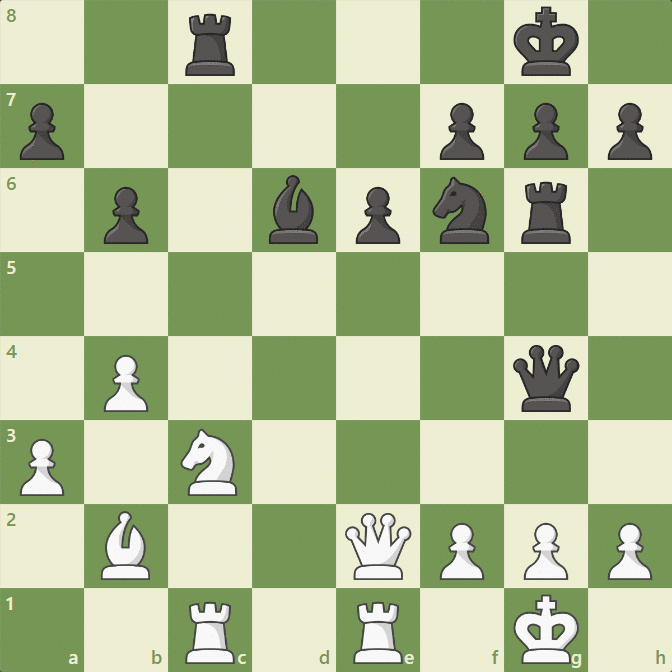
Exchanging Pieces
Piece exchanges are very common in chess. It is safe to say that going a whole game without making a single exchange is nearly impossible. That is why you should be familiar with this aspect of chess.
- What Is A Piece Exchange?
- Types Of Exchanges
- Basic Exchanging Guidelines
- When A Loss Or Checkmate Is Imminent
- When You Are Ahead In Material
- When You Can Gain A Better Position
- Test Your Skills
- Conclusion
- Watch The Video Lesson
What Is A Piece Exchange?
A piece exchange (also known as "piece trade") happens in chess when both players capture each other's piece in a series of related moves. Those moves do not need to be one right after the other, but there must be a connection between the captures.
Consider this example of piece exchange that happened in a game of the 2014 World Championship match between GM Magnus Carlsen and GM Viswanathan Anand.
Types Of Exchanges
Not all piece exchanges are created equal. When considering solely the strength of each piece that is traded, we can define them as being of one of two kinds.
Even Exchanges
Even exchanges occur when the total piece value traded by both sides is equal. The pieces do not have to be the same as long as the final material count is equivalent for both players.

Some examples of even exchanges are:
- Any trade of the same pieces, such as a rook for another rook, a pawn for another pawn, and so on;
- A bishop for a knight (3 points each);
- A knight and two pawns for a rook (5 points each);
- A queen and a pawn for two rooks (10 points each).
Uneven Exchanges
Uneven exchanges happen when the final material count for each side's captured pieces is different. The player who gained material then "wins the exchange," or is "up the exchange." The player who lost material, on the other hand, "loses the exchange" or is considered to be "down the exchange."

Basic Exchanging Guidelines
Sometimes you are forced to trade to avoid losing material or losing the game. In many situations, though, trading is just an option. In some cases, even making an even exchange is not always advisable. Here are some general guidelines about when you should make an exchange.
When A Loss Or Checkmate Is Imminent
You do not want to lose material or get checkmated. Sometimes trading pieces is the only way to avoid those outcomes, and you should definitely make the exchange.

When You Are Ahead In Material
Most of the time, when you are ahead in material you should proceed with even exchanges. Material advantages get proportionally more significant with each piece that is taken off from the board, so you should capitalize on your advantage whenever you can.

When You Can Gain A Better Position
When the resulting position after a trade favors you, you should make the exchange. Take a look at the diagram below. After White takes Black's rook, the other black rook simply recaptures the white piece.
The resulting position, however, puts the black rook on the only open file. Black's rook is now much more active than White's. This means that White should not have traded rooks.
Test Your Skills
Now that you know about the concept of piece exchanges, let's put that knowledge into practice! Take a look at the position below. Black just captured a white knight. Can White take a piece back?

You are right! White can capture the black bishop!

Check out the diagram below. Should Black exchange pawns?
Conclusion
You now know what it means to exchange pieces in chess as well as what even and uneven trades are. Head over to Live Chess right now and use your newly gained knowledge to crush your opponents!
Watch the Video Lesson
Reading an article is a great way to improve, but watching a video lesson can help you even more! Here is a video lesson about exchanging pieces.







